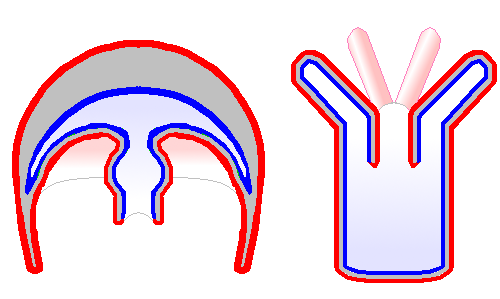
The phenomenon of polymorphism (presence of two distinct forms- polyp and medusa) is shown in the phylum
A. Porifera
B. Cnidaria
C. Nematoda
D. Mollusca
E. Echinodermata
Answer
555.6k+ views
Hint: Polymorphism is the phenomenon by which different individuals included in the same colony have different forms of existence. It is exhibited by many organisms in the animal kingdom. The different forms may have different functions associated. It is mainly present in the lower phyla in the animal kingdom.
Complete answer:
Polymorphism is exhibited by members of Kingdom Cnidaria. The different forms are polyp and medusa, where polyps are free-swimming or motile and medusa is sessile or stationary. Some species belonging to this phylum can exist in two different forms alternatively. An example of organisms exhibiting polyp form is the Hydra species. Medusa form is exhibited by Jellyfishes which has an umbrella-like shape.

Considering the other given options:
-Phylum Porifera or sponges are included in kingdom Animalia and mainly consist of aquatic organisms, which are multicellular, these organisms do not possess polymorphism. An example of a member organism is Sycon.
-Phylum Nematoda consists of roundworms which are characterized mainly by parasitic organisms. Leeches are the example of organisms present in this kingdom.
-Mollusca is the second largest phylum in Animalia. It consists of both terrestrial and marine animals. Pila or apple snail and octopuses belong to this phylum.
-Echinodermata consists of marine animals. It consists of starfishes and sea urchins.
Thus, the most appropriate answer is B, i.e., polymorphism is exhibited by cnidarians.
Note: When the members of phylum cnidaria, exist by switching between the polyp and medusa forms, the phenomenon is known as alternation of generations. The polyp is the asexual form while medusa is the sexual form. Under phylum cnidaria, class hydrozoa exhibits alternation of generation. This phenomenon is also known as metagenesis.
Complete answer:
Polymorphism is exhibited by members of Kingdom Cnidaria. The different forms are polyp and medusa, where polyps are free-swimming or motile and medusa is sessile or stationary. Some species belonging to this phylum can exist in two different forms alternatively. An example of organisms exhibiting polyp form is the Hydra species. Medusa form is exhibited by Jellyfishes which has an umbrella-like shape.

Considering the other given options:
-Phylum Porifera or sponges are included in kingdom Animalia and mainly consist of aquatic organisms, which are multicellular, these organisms do not possess polymorphism. An example of a member organism is Sycon.
-Phylum Nematoda consists of roundworms which are characterized mainly by parasitic organisms. Leeches are the example of organisms present in this kingdom.
-Mollusca is the second largest phylum in Animalia. It consists of both terrestrial and marine animals. Pila or apple snail and octopuses belong to this phylum.
-Echinodermata consists of marine animals. It consists of starfishes and sea urchins.
Thus, the most appropriate answer is B, i.e., polymorphism is exhibited by cnidarians.
Note: When the members of phylum cnidaria, exist by switching between the polyp and medusa forms, the phenomenon is known as alternation of generations. The polyp is the asexual form while medusa is the sexual form. Under phylum cnidaria, class hydrozoa exhibits alternation of generation. This phenomenon is also known as metagenesis.
Recently Updated Pages
Master Class 11 Chemistry: Engaging Questions & Answers for Success

Why are manures considered better than fertilizers class 11 biology CBSE

Find the coordinates of the midpoint of the line segment class 11 maths CBSE

Distinguish between static friction limiting friction class 11 physics CBSE

The Chairman of the constituent Assembly was A Jawaharlal class 11 social science CBSE

The first National Commission on Labour NCL submitted class 11 social science CBSE

Trending doubts
What is meant by exothermic and endothermic reactions class 11 chemistry CBSE

10 examples of friction in our daily life

One Metric ton is equal to kg A 10000 B 1000 C 100 class 11 physics CBSE

Difference Between Prokaryotic Cells and Eukaryotic Cells

What are Quantum numbers Explain the quantum number class 11 chemistry CBSE

1 Quintal is equal to a 110 kg b 10 kg c 100kg d 1000 class 11 physics CBSE




